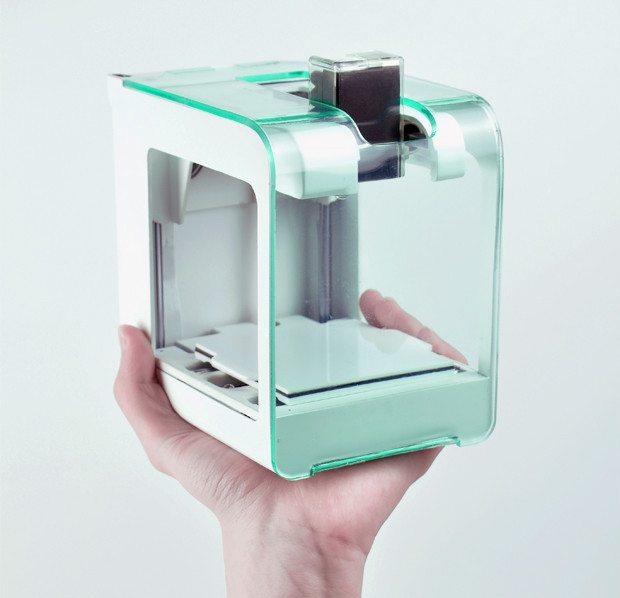
Need a 3D printer you can put in your pocket? Well, it may be slightly bigger than a pocket, but the PocketMaker is indeed very small.
There are small volume 3D printers, particularly in the dental and jewelry markets, but the PocketMaker is a different beast entirely. This is not a professional machine, but instead one that’s intended for introductory use.
How small is it? Check out this image for scale:

The specifications for the PocketMaker are of course modest, yet still functional:
- Prints 1.75mm PLA or ABS plastic filaments
- Build volume of 80 x 80 x 80mm, one of the smallest machines I’ve heard of
- The print surface is detachable for easier removal of completed prints
- Layer resolution of 0.200mm, quite a bit larger than most desktop 3D printers
- Wireless and USB connectivity
- Easily replaceable hot end nozzles
- Smartphone app to directly control 3D print operations
There are no specs for print speed I’ve seen, but in fact that doesn’t matter! Because the print volume is so small, and the layer resolution is relatively coarse, it means that prints will be quite speedy – even though the printed item will be small.
But the most interesting feature of this machine is its pricing. The PocketMaker, set to go retail in June 2017, will be priced at USD$149, a tremendously low price. However, for their crowdfunding launch the company has established far lower prices, including a ridiculous USD$49 price for the initial units. However, those are long gone now.

But don’t worry about that – there are still plenty of units available at USD$79-99. It’s almost a free 3D printer. They also offer more pricey packages that include additional filament, but as the machine accepts generic filament, you might get a better deal elsewhere.
I find the strategy of an extremely small machine quite interesting. As a learning machine it could certainly do the job, as students and those interested in 3D printing can definitely learn much about the process: the work required to operate the machine will be similar to larger, more expensive machines.
If I have one concern about this project, it would be the company’s ability to survive with such a low price. I cannot imagine their margin per machine being more than a few dollars unless they hit the big time and are manufacturing tens of thousands of units at scale. Until then, they could have a challenging time funding their operations.
On the other hand, USD$99 isn’t that big a risk.

